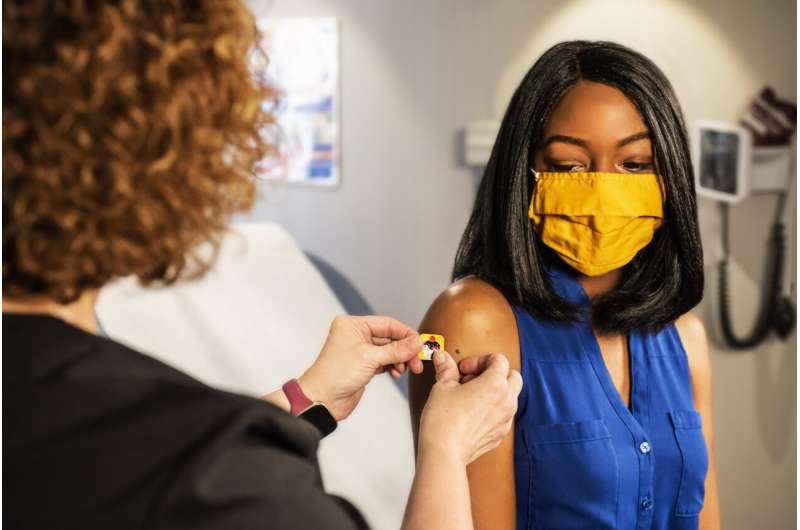Why you can still trust the Johnson & Johnson vaccine


Based on what we know so far, the chances of developing a serious problem are roughly the chances you’ll be struck by lightning this year. That’s one reason why, after a thorough review, a panel of experts determined that the benefits of the Johnson and Johnson vaccine greatly outweigh its risks—especially for certain groups.
The concerns surrounding the vaccine are related to an extremely rare and serious blood clotting issue. At the time the expert panel met last week, this issue had been reported in 15 people—out of nearly 8 million—who had recently had the Johnson and Johnson vaccine.
“Those numbers may change as we monitor for more cases, but we know the risks of COVID are much worse,” said Angela Branche, M.D., infectious disease expert and co-director of the URMC Vaccine and Treatment Evaluation Unit. “Your chance of being hospitalized for COVID is about 100 in 500,000. Your chance of dying from COVID is 15 in 500,000. And this vaccine is 100 percent effective at preventing both of those outcomes.”
These are the sorts of calculations the panel used to decide that the Johnson & Johnson vaccine should continue to be used in people over 18 years of age in the U.S. The expert scientists and doctors from the Food and Drug Administration and Centers for Disease Control and Prevention weighed the risks and benefits of the vaccine both on the public and on individuals.
According to careful forecasting by CDC scientists, reinstating the vaccine for everyone over 18 could lead to as many as 45 blood clotting cases in the next six months—which experts hope will be easier to catch and treat now that we know what to look for. On the other hand, if the vaccine was no longer used, we could expect an extra 800 to 3,500 people ending up in the ICU with COVID and an extra 600 to 1,400 COVID deaths in a six-month span.
Risk also appears to vary by age and gender. Men and people over 50 have almost no risk of developing this clotting condition. The vast majority of cases reported so far have occurred in women of child-bearing age—a group that is generally more prone to clotting. While women 18 to 50 years old bear the brunt of the risk, that risk is dwarfed by the vaccine’s ability to prevent COVID deaths.
As of today, according to the CDC, the COVID death toll has topped 569,000 in the U.S. That’s like losing more than 12 Yankee Stadiums or 15 Fenway Parks full of our fellow citizens in a little over a year.
And that’s just the U.S. In order to end this pandemic and get back to normal, we need to think globally. The longer the virus can spread here and in other countries, the greater the risk that a variant could emerge that evades current vaccines, potentially resetting the clock on the pandemic.
“We can’t vaccinate the world without this,” said Ann R. Falsey, M.D., infectious disease expert and co-director of the Vaccine and Treatment Evaluation Unit at URMC, referring to the Johnson & Johnson COVID vaccine. “The Pfizer and Moderna vaccines come with storage challenges that make it harder to get to certain vulnerable populations, like people who are homeless or homebound or incarcerated.”
Coincidentally, the people who are hardest to reach with other vaccines are also most at-risk for bad COVID outcomes. These populations stand to benefit most from the Johnson and Johnson vaccine, because it only requires a single shot and can be stored under regular refrigeration for several months, making it easier to distribute to hard-to-reach and underserved areas of our nation and others.
Source: Read Full Article